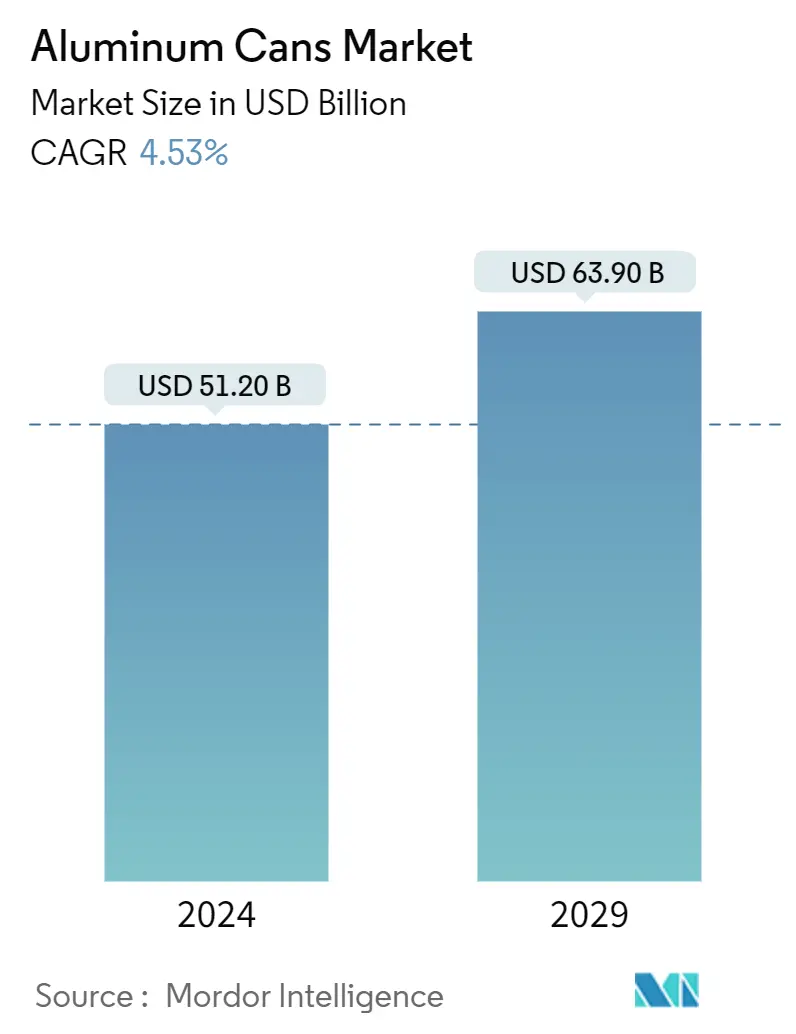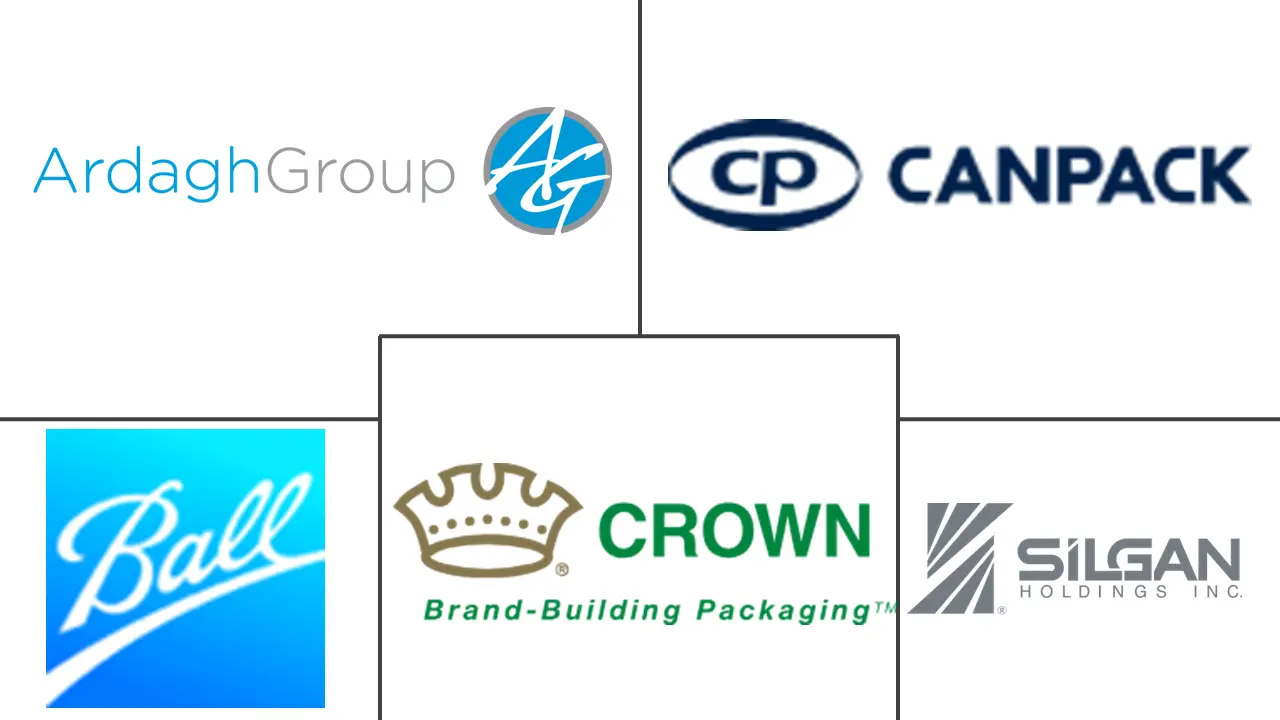Market Size of Aluminum Cans Industry

| Study Period | 2019 - 2029 |
| Market Size (2024) | USD 51.20 Billion |
| Market Size (2029) | USD 63.90 Billion |
| CAGR (2024 - 2029) | 4.53 % |
| Fastest Growing Market | Asia Pacific |
| Largest Market | North America |
Major Players
*Disclaimer: Major Players sorted in no particular order |
Need a report that reflects how COVID-19 has impacted this market and its growth?
Aluminum Cans Market Analysis
The Aluminum Cans Market size is estimated at USD 51.20 billion in 2024, and is expected to reach USD 63.90 billion by 2029, growing at a CAGR of 4.53% during the forecast period (2024-2029).
- Aluminum cans offer long-term food quality preservation benefits. Aluminum cans deliver nearly 100% protection against light, oxygen, moisture, and other contaminants. Aluminum cans do not rust and are corrosion-resistant, providing one of the most extended shelf lives considering any packaging.
- The rising application of aluminum cans in the food and beverage industry can be attributed to their protective properties, sustainability advantages, and consumer convenience. This trend is expected to continue as both manufacturers and consumers recognize the benefits associated with aluminum packaging. Aluminum can be the most recycled material on earth, with around a 100% recyclability rate. Aluminium does not decay throughout the recycling process; thus, it can be recycled numerous times. Recycling aluminum saves millions of tonnes of greenhouse gas emissions, energy, power, and transportation fuel. Producing aluminum cans using recycled materials uses less than 5% of the energy required to produce new aluminum cans from Bauxite.
- Aluminum cans have a higher recycling rate and more recycled content than competing package types. According to the Aluminum Association, it's one of the most recycled materials on the market. In April 2022, Ball Corporation partnered with Recycle Aerosol LLC to boost the recycling rates of aluminum aerosol cans in the United States. The collaboration increases aerosol can recycling and establishes a closed-loop system in which used cans are recycled into new aerosol cans. The production of aluminum goods from recycled aluminum is energy- and carbon-efficient. Because the alloys used to make aluminum aerosols are of high purity, there are efficiency improvements that also lessen the demand for virgin aluminum when they are mainly derived from recycled aluminum aerosol bottles and cans.
- However, aluminum can packaging faces high competition from alternative packaging solutions. Plastic, paper, and glass packaging solutions are the alternative packaging options available in the industry. Also, the increasing importance of e-commerce worldwide is expected to influence the overall packaging industry. Moreover, incremental enhancements in plastic packaging are posing a threat to the market, which can primarily be allocated to the popularity of plastics, such as polyethylene terephthalate (PET), as substitutes. PET plastics threaten to displace aluminum can solutions in the food and beverage sector.
- Meanwhile, consumer trends, such as a preference for small-size and multi-pack packaging formats, support the volume growth of aluminum cans, especially for the ready-to-eat food segment. Hence, most companies across emerging regions offer mini-cans, which usually contain smaller volumes of products at less cost than traditional canned products. For instance, food innovations in canned seafood in Southeast Asia are witnessing significant growth.
- Further, as COVID-19 swept across the world, all industries were affected majorly due to disruption in the supply chains and government-imposed lockdowns in the wake of controlling its spread. Also, the war between Russia and Ukraine resulted in economic sanctions against several countries, high commodity prices, supply chain disruptions, and impacts on many markets worldwide, and caused trade disruptions in the industry. War pushed European aluminum companies to cut production, leading to metal shortages. Commodity traders are competing for scarce profits from shipping aluminum from China as the war in Ukraine has created severe shortages for European manufacturers who rely on Russian supplies. Europe has experienced a surge in energy costs.
